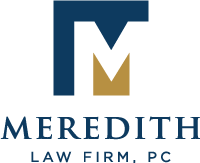Beneficiary Designation forms are the instructions for the custodian of the IRA or life insurance company that tell them what to do with the funds in the accounts when it is time to distribute them. Life Insurance, IRAs and other Qualified Plans, and Annuities pass by beneficiary designation form.
Most people do not realize that these assets are considered “non-probate assets” and will not pass according to the terms of a Will or Revocable Living Trust unless the “estate” is specifically named as a beneficiary or there is no beneficiary named at all. Therefore, because these assets are often the largest in the estate, it is very important to make sure your beneficiary designation forms are filled out correctly and are consistent with your overall estate plan.
Once again, consider Tom and Cindy Client. Tom has a 401(k) offered to him through his employer and Cindy has her own IRA set up by their financial advisor. They are both wondering who to name as primary and secondary beneficiaries.
There are four common choices for designated beneficiaries that Tom and Cindy can choose from:
Spouse
The spouse is the most common choice as the primary beneficiary of an IRA and for good reason. This is because when the spouse is the designated beneficiary they do a “Spousal rollover” and rollover the inherited IRA into their own IRA
Children
In cases where there are children from a previous marriage, the children are sometimes named as the primary beneficiaries. This allows the owner to make sure their children receive all, or a portion, of their IRA. However, in my opinion, if children are going to be the primary beneficiaries, I suggest naming a trust as the beneficiary and have the trust determine how distributions are made. More on this in a moment.
Charity
For some, a charity is the best option because the full amount of the IRA will be distributed to the charity tax free. For individuals and non-charity beneficiaries, tax will be due when distributions are made (unless the distributions are from a Roth IRA). However, because the charity is tax exempt, there is no income or estate tax due on the distributions.
Trust
In my opinion, a trust is a wonderful option as the beneficiary of an IRA or 401(k). The trust can be drafted so that the funds are protected from any creditors of the beneficiaries, distributions can be controlled to ensure stretching, and the assets are kept out of the beneficiaries’ estate for estate tax purposes.
There are several options for how the trust is designed. It can be a separate stand alone trust that only handles the IRA. Or, the trust can be a sub-trust within a Will or Revocable Living Trust, or if the client is charitably inclined, a charitable remainder or charitable lead trust can be used.
Back to Tom and Cindy, ideally they will name each other as primary on their respective forms and then they will name a special trust (which names their children as beneficiaries) as the contingent beneficiary.
In addition, here is another article that offers some more information on filling out the form.
